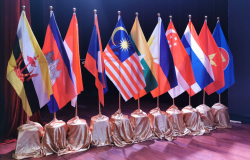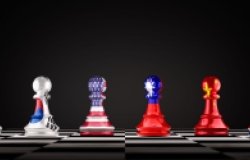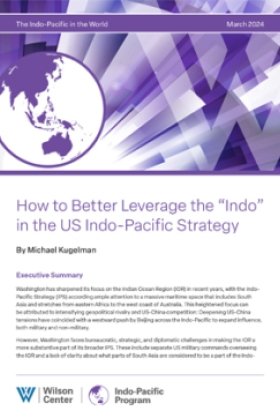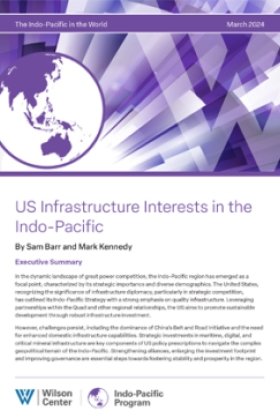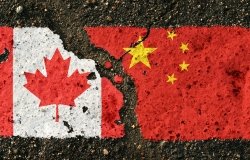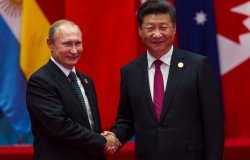Math and Science Teaching in Northeast Asia:<br>Do They Do It Better?
SpeakersVivien Stewart, Asia Society; Tad Watanabe, Kennesaw StateUniversity; Hyunjoon Park, University of Pennsylvania; Raymond Simon, U.S. Department of Education.
Overview
Do China, Japan, and Korea teach math and science better than the United States? Do their students perform better on international tests? "Yes" was the resounding answer to both questions from three experts on Asian education who spoke November 14 at a Wilson Center event sponsored by the Asia Program and co-sponsored by the Program on Science, Technology, America & the Global Economy and the Division of United States Studies. The event also featured U.S. Deputy Secretary of Education Raymond Simon, who listed the problems and progress being made in math and science teaching in the United States, and poignantly noted the need to alter U.S. culture to give teachers more respect and support, thus enabling them to get better results from their students.
Vivien Stewart, vice president for education at the Asia Society, began the seminar by discussing the Chinese educational system. She first noted its huge size. With 360 million students under the age of 18, China has 20 percent of the world's student population, but only 2 percent of the resources. In rural areas, there is no upper secondary or high school education. However, China's ministry of education does set clear national standards, and "everything aligns to that." In the United States, by contrast, the states set the standards, and they are not evenly implemented. In China, a core curriculum in science and math is mandatory, including algebra, geometry, biology, chemistry and physics. In the United States, 40 percent of high school students do not take anything more challenging than general biology. In China, more teachers of science and math have degrees in the field than their counterparts in the United States, including teachers in the early, elementary years. Chinese schools are also more focused. There are no sports or extra-curricular activities. Accordingly, Chinese students spend more hours studying than students in the United States. With longer school days, a longer school year, and heavy homework assignments, the average Chinese student, compared to his or her American counterpart, will spend the equivalent of two more years in school.
Turning to Japan, 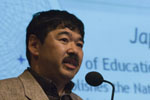 Tadanobu Watanabe, associate professor of mathematics education at Kennesaw State University, also stressed the importance of a centralized ministry of education, which establishes a national course of study for all subjects and approves textbooks. Watanabe stated that it was important to have textbooks aligned with standards. By contrast, states in the United States choose among textbooks written to meet the demands of several states. As a result, the textbooks do not align closely with the state standards. Textbooks in Japan are also much more focused and slimmer than those in the United States. Watanabe held up about six mathematics textbooks to demonstrate: together, all six were the size of an average U.S. textbook. The Japanese ministry of education also sets the standard for the minimum number of lessons that must be conducted per subject. A shift in university entrance requirements, however, has eliminated the math and science exam for students choosing to pursue the humanities. As a result, the number of Japanese students pursuing advanced math and science in the secondary schools is declining.
Tadanobu Watanabe, associate professor of mathematics education at Kennesaw State University, also stressed the importance of a centralized ministry of education, which establishes a national course of study for all subjects and approves textbooks. Watanabe stated that it was important to have textbooks aligned with standards. By contrast, states in the United States choose among textbooks written to meet the demands of several states. As a result, the textbooks do not align closely with the state standards. Textbooks in Japan are also much more focused and slimmer than those in the United States. Watanabe held up about six mathematics textbooks to demonstrate: together, all six were the size of an average U.S. textbook. The Japanese ministry of education also sets the standard for the minimum number of lessons that must be conducted per subject. A shift in university entrance requirements, however, has eliminated the math and science exam for students choosing to pursue the humanities. As a result, the number of Japanese students pursuing advanced math and science in the secondary schools is declining.
 Hyunjoon Park, assistant professor of sociology at the University of Pennsylvania, demolished the myth that the success of South Korean students in science and math is all due to memorization and rote learning. He noted that South Korean students score higher on international tests in science and math than their counterparts in the United States and other Western countries. This is true in both the top and bottom of the curve: that is, the top students' scores are higher than those in other countries, and the lower students' scores are also higher. An international test in 2003 that tested for problem-solving skills also showed that South Korean student scores were higher in this category as well. Therefore, asserted Park, charges that South Korean educational methods are based simply on rote learning are not true. As with the previous two speakers, Park attributed part of this success story to centralized standards, uniform teaching methods, and standardized textbooks.
Hyunjoon Park, assistant professor of sociology at the University of Pennsylvania, demolished the myth that the success of South Korean students in science and math is all due to memorization and rote learning. He noted that South Korean students score higher on international tests in science and math than their counterparts in the United States and other Western countries. This is true in both the top and bottom of the curve: that is, the top students' scores are higher than those in other countries, and the lower students' scores are also higher. An international test in 2003 that tested for problem-solving skills also showed that South Korean student scores were higher in this category as well. Therefore, asserted Park, charges that South Korean educational methods are based simply on rote learning are not true. As with the previous two speakers, Park attributed part of this success story to centralized standards, uniform teaching methods, and standardized textbooks.
 Raymond Simon, U.S. deputy secretary of education, recalled that when he began his teaching career in Arkansas in 1966 as a high school math teacher, the slide-rule was king, and the new math dominated. In his career, he has seen educational fads come and go. With regard to the new math, "some kids got it, most others didn't." Simon acknowledged that on international test scores, U.S. students lag far behind many other countries. It is a time for adjustment in U.S. education, he declared, particularly in math and science, and this adjustment is taking place. Simon cited the No Child Left Behind Act as contributing to the change. This year, for example, students will be tested not only in math and reading, but in science as well. In 2007, learning standards are state-based. These changes are working: math scores, for example, are higher. Simon also noted that President George W. Bush last year established the National Math Advisory Panel. He introduced two member of the panel present at the seminar. He said that their report, when issued, will help establish important standards in mathematics learning.
Raymond Simon, U.S. deputy secretary of education, recalled that when he began his teaching career in Arkansas in 1966 as a high school math teacher, the slide-rule was king, and the new math dominated. In his career, he has seen educational fads come and go. With regard to the new math, "some kids got it, most others didn't." Simon acknowledged that on international test scores, U.S. students lag far behind many other countries. It is a time for adjustment in U.S. education, he declared, particularly in math and science, and this adjustment is taking place. Simon cited the No Child Left Behind Act as contributing to the change. This year, for example, students will be tested not only in math and reading, but in science as well. In 2007, learning standards are state-based. These changes are working: math scores, for example, are higher. Simon also noted that President George W. Bush last year established the National Math Advisory Panel. He introduced two member of the panel present at the seminar. He said that their report, when issued, will help establish important standards in mathematics learning.
There are still problems, however, Simon noted. Children in the United States believe success in math is due more to ability than effort. The number of math and science teachers in the United States leaving the profession is greater than the number entering. Most importantly, perhaps, stated Simon, this country must acknowledge the respect and support due to our teachers, and must insist that quality teaching be distributed equally to the poor as well as to the affluent. Good teaching is at the heart of good learning. Simon concluded that if this means giving the status quo the heave-ho, so be it. Returning to his theme that U.S. culture needs to value education, Simon reasserted that the two most important ingredients for improving education in the United States are respect and support for teachers. "If we can't get those two things right, we won't get it right," he asserted.
Drafted by Mark Mohr, Asia Program Associate
Robert M. Hathaway, Director, Asia Program. Ph: (202) 691-4020
Hosted By

Indo-Pacific Program
The Indo-Pacific Program promotes policy debate and intellectual discussions on US interests in the Asia-Pacific as well as political, economic, security, and social issues relating to the world’s most populous and economically dynamic region. Read more
Thank you for your interest in this event. Please send any feedback or questions to our Events staff.
